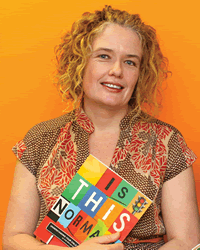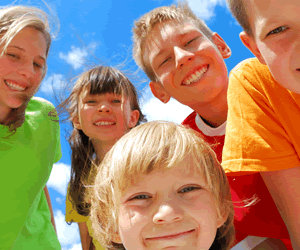 Too often the headlines about sexuality and sexualisation, sexting and pornography are presented along a “for or against” continuum. We read stories that titillate and horrify. When the articles appear, you can set your watch by the outcry. Ban technology! Introduce legislation! Attribute blame! Denounce the role of schools, teachers and parents!
Too often the headlines about sexuality and sexualisation, sexting and pornography are presented along a “for or against” continuum. We read stories that titillate and horrify. When the articles appear, you can set your watch by the outcry. Ban technology! Introduce legislation! Attribute blame! Denounce the role of schools, teachers and parents!
This makes for entertaining debate, but doesn’t really help build skills or protect. The overwhelming majority of people want children to be smart and safe, however there remain significant myths about what it means to inform and protect children in this area. Families and schools require a thoughtful, informed response to rise above the din.
We want our children to be safe. The question is how. We spend so much time talking about the bad and the ugly; we don’t know what ‘good’ looks like. What does age-appropriate, normal and safe sexuality mean?
The good news is that there are practical solutions to this challenge. It doesn’t require a special event, intervention or a mini series. Parents and teachers can support the sexual development of children and young people in ways that integrate with their daily lives.
Children can learn the skills to make sense of what they see and hear.
Talking about normal healthy sexuality is a sensible part of the solution. For example, children can learn that they can talk with trusted adults if those adult carers are not ashamed or embarrassed about sexuality.
Trusted adults can:
- Make time to talk
- Make time to listen
- Talk about feelings
- Talk about bodies and being private
- Talk about growing and developing
- Talk about types of touch and the rules about touch
- Talk about relationships
- Talk about being safe, healthy and informed on line and off.
Remember to be positive and factual.
We can’t prevent children and young people from being exposed to concerning material. But we can help children to learn what is important and how to be critical and safe.
Ultimately, do you want porn or “Dr Google” to be your child’s sole source of sexuality and relationships education? In the absence of communication with trusted adults, that can happen.
The bottom line is that it helps children and young people when you talk about, ‘what is normal.’ I know this, not just because I have studied the evidence. I know because I have seen their faces, I have listened to their stories. I know it works. The headline we should aspire to is: “Most children’s sexual behaviours are normal and nothing to worry about. Talk with your children about sexuality today.”
~~~
Holly Brennan OAM is the Manager of Research and Innovation at Family Planning Queensland and co-author with Judy Graham of Is this normal? Understanding your child’s sexual behaviour available at www.fpq.com.au.



